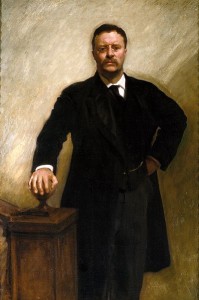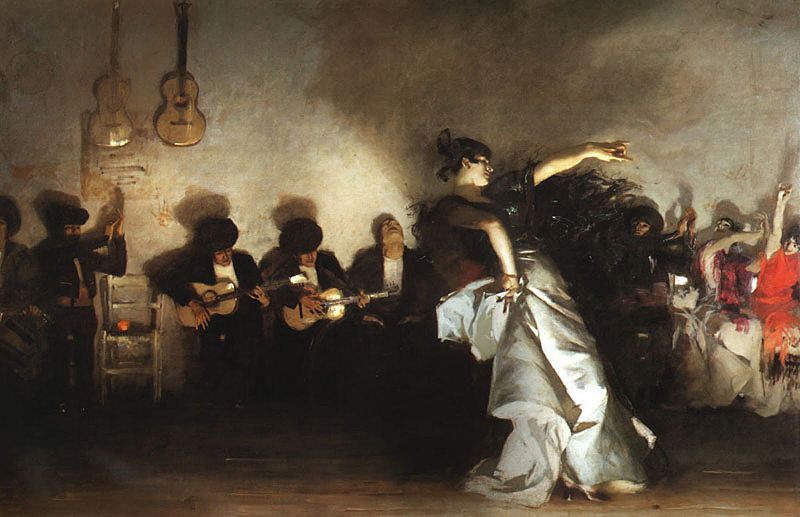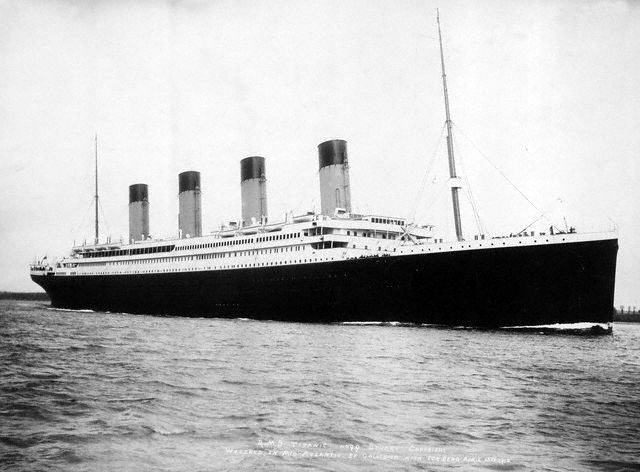Unlike film, portrait painting and painting in general, must create an emotional reaction from the viewer perceiving a single fused projection of a moment in time. Its necessary immobility creates a vague sense of passiveness as the emotions created do not build into complex directions that create tension with the original impulse. It is the great painter that creates tension in the viewer, the desire to know more of the subject, to want to know what happened to the subject before and after the fixed moment in time. It is the great painter that succeeds in injecting the spark of life into the inanimate canvas and layers of paint that make the viewer feel more than see the painting. John Singer Sargent was that kind of painter.
John Singer Sargent (1856-1925) was an anachronism. He was an American painter through and through , but was born in Italy and spent the better part of his working life in Paris and London. David McCullough’s excellent new book The Greater Journey : Americans in Paris relates the story of many American artists who came to Paris in the 19th century to hone their craft or become recognized as “trained” by the French school of artists when they returned home. John Singer Sargent was different in that he did not discover Paris; Paris discovered him. From his first classes with eminent French portrait painter Carolus-Duran, it was clear this teenager was a throwback to the greats, in that he had an epic talent that needed only to be unsheathed, not developed. He burst upon the public consciousness with a portrait of his teacher Carolus that was not a likeness, but instead a capture of a soul of the painter.  Carolus is staring directly at the viewer, intense and confident, his body at a jaunty angle, his clothes modern and dandyish, a contained flamboyance of an artist. The hands are languid and flexible and speak to their occupation. Most dramatic are the signature Sargent creation, the eyes. The eyes have what time and time again would project from a Sargent portrait, the radiating energy of a living being, not a memory. This powerful Sargent characteristic was an irresistible draw for wealthy and powerful individuals who wished to be preserved through time with their youth, beauty, and power intact, and Sargent gave them their wish as no other artist of his time.
Carolus is staring directly at the viewer, intense and confident, his body at a jaunty angle, his clothes modern and dandyish, a contained flamboyance of an artist. The hands are languid and flexible and speak to their occupation. Most dramatic are the signature Sargent creation, the eyes. The eyes have what time and time again would project from a Sargent portrait, the radiating energy of a living being, not a memory. This powerful Sargent characteristic was an irresistible draw for wealthy and powerful individuals who wished to be preserved through time with their youth, beauty, and power intact, and Sargent gave them their wish as no other artist of his time.
A particularly favorite portrait of mine, and there are so many, was Singer Sargent’s 1893 portrait of Lady Agnew of Lochnaw. The colors are cool and restrained, as befits a British lady of the Victorian era. She is relaxed, refined, assured of her place and time, and closed to the momentary emotional impulses that would effect a woman of lesser stature.  But Sargent as he did time and time again let the viewer know she is all woman, fully aware of her beauty and her effect on those who would gaze upon her. Again Sargent brings the eyes to bear – a cool blue grey that dares you to look away, and know you can not. Once again, though rigidly positioned in the clothes and culture of her time, she is as alive as a breathing being that could easily walk out of the painting and across the room, if she so desired.
But Sargent as he did time and time again let the viewer know she is all woman, fully aware of her beauty and her effect on those who would gaze upon her. Again Sargent brings the eyes to bear – a cool blue grey that dares you to look away, and know you can not. Once again, though rigidly positioned in the clothes and culture of her time, she is as alive as a breathing being that could easily walk out of the painting and across the room, if she so desired.
This intense realism was in juxtaposition to the trends of of painting in the late 19th century that became dominant and “modern”, the winning out of tone and color known as Impressionism, over true reproduction. But Sargent wasn’t about the immediate truth of a subject, more of the eternal truth that reflected more of their soul and life force. It is seen again in his visions of the powerful – take the portrait of President Theodore Roosevelt.  In Sargent’s view, Roosevelt is every bit the world statesman, but Roosevelt’s nervous, inextinguishable energy shines through. He is a coiled spring and at the height of his personal physicality and power. His confident hand rests on the stairwell, but it might as well as well be the globe of the world given his posture. It was no wonder Sargent never struggled to find subjects for his portraits, as he never failed to pull out the most humanity from whatever unique source they had to give.
In Sargent’s view, Roosevelt is every bit the world statesman, but Roosevelt’s nervous, inextinguishable energy shines through. He is a coiled spring and at the height of his personal physicality and power. His confident hand rests on the stairwell, but it might as well as well be the globe of the world given his posture. It was no wonder Sargent never struggled to find subjects for his portraits, as he never failed to pull out the most humanity from whatever unique source they had to give.
John Singer Sargent was no less gifted in a media that has never held the respect that magnificent oil paintings do, but can be equally complex and illuminating, that of the watercolor. The media of watercolor requires a innate understanding of each color’s interaction and each color’s effect on the painting’s light as the process of watercolor painting is similar to plein-air oil in its immediacy, but also permanent and mistaken impressions irretrievable. Sargent somehow manage to bring the same nervous tension to the watercolor that he did to the oil painting. In the watercolor Bedouins,  Sargent once again uses the eyes to fuel in both the male and female subjects their pride and vitality, despite the pastel nature of the color. In the landscape Gondolier’s Siesta,
Sargent once again uses the eyes to fuel in both the male and female subjects their pride and vitality, despite the pastel nature of the color. In the landscape Gondolier’s Siesta, Sargent inflects a dream-like state that brings motion to the water and impressive depth to the rough charactertures of the gondoliers.
Sargent inflects a dream-like state that brings motion to the water and impressive depth to the rough charactertures of the gondoliers.
Over a lifetime of prodigious work, John Singer Sargent created over 900 oil paintings and over 2000 watercolors and has become an American giant in the world of art. At the end of his life he seemed hopelessly old fashioned, tied more to Titian and Velazquez than Van Gogh and Picasso. The school of Realism, denigrated for almost a hundred years as art turned to more and more abstract interpretations of the world in which we live, has seen a comeback of late and an increased respect for the creativity and talent required to open the human eye to more complexity than its already complex view of the world records. John Singer Sargent was a realist but recognized that people at their core were a special form of energy, that held all of life’s pain and exuberance, introspection and vitality, in equal measure. Sargent was recorder of the Spark of Life, and will provide for anyone who gazes upon his masterpieces far flung across the world, a small surge of understanding of what it means to be human, and to have lived life to its fullest.









